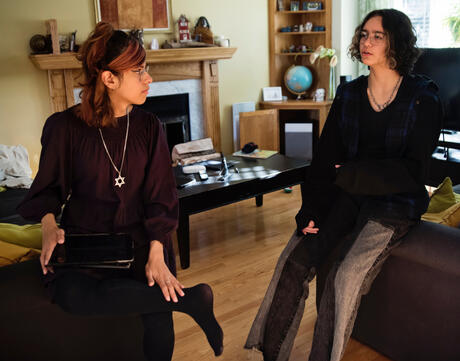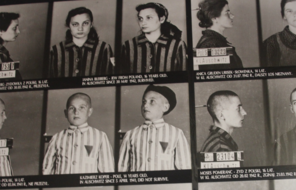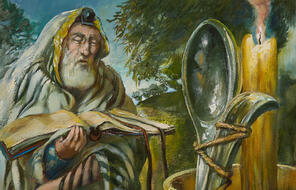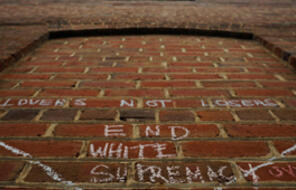
A Lesson Series on the Complexity of Jewish Identity for Middle School Students
Over the 2023/24 school year, Facing History partnered with the Jewish Education Project (JEP), an organization that provides leadership training, professional development, resources, and other support for Jewish educators to empower them to help their students and families thrive. In conjunction with the Shine A Light campaign against antisemitism, Facing History and the JEP collaborated on three lessons addressing contemporary antisemitism while centering the experiences and identities of multiethnic Jews, Jews of Color, and Mizrahi and Sephardic Jews. Both Facing History and the JEP believe creating educational materials that highlight and celebrate Jewish joy, pride, diversity, and complexity is a critical way to combat antisemitism. These materials were featured in the 2023 Shine A Light campaign against antisemitism.
A collaboration between the Facing History Contemporary Antisemitism and Jewish Education teams, three connected lessons have been developed with a focus on identities that challenge the mainstream American perception of Jews as white and Ashkanazi. Each lesson, designed for two 50-minute class periods, is grounded in a different Jewish holiday, its texts and traditions; each lesson also examines how antisemitism, racism, and/or stereotyping impact Jewish individuals and communities.
The first lesson, Forging Jewish Identity as a Minority, employs the story of Hanukkah to identify the struggles to maintain a minority identity when a dominant society wishes to suppress, ignore, or devalue it. In this two-part lesson, students explore how their multiple cultural identities are expressed and defined, what circumstances allow them to safely share and celebrate their identities, and what circumstances cause them to hide aspects of their identities as a means of protection and preservation.
The second lesson, Expressing Diversity in Jewish Identity: Blending In and Standing Out, is framed with a text study about the biblical origins of Purim and explores the history and dynamics of the Mizrahi Jewish identity. The two-part lesson first explores the tensions that arise when we’re asked to classify our identities. We then investigate the impact of antisemitism and racism on cultural assimilation, acculturation, resistance, and preservation. Finally, the lesson asks students to identify assumptions made about Jewish identity both within and outside Jewish communities and consider how to dispel harmful assumptions that can make Jewish spaces less inclusive.
The final lesson, which we plan to publish later this spring, ties to Passover and focuses on Jewish identities that fall under the label “Jews of Color” and explores the benefits and limitations of identity labels. This two-part lesson provides data and testimonies by individuals who fall within the category “Jews of Color” to help students consider how antisemitism and racism impact feeling both a part of one’s Jewish community and apart from the one’s Jewish community. After reading various expressions of diverse Jewish identity, students assess their own Jewish communities’ states of inclusivity.
While these three lessons are designed for middle school students in Jewish education environments, there are activities within each lesson that could be modified to implement in a non-Jewish classroom to help students of various backgrounds, races, religious traditions, and ethnicities broaden their understanding of Jewish identity. These lessons are available on the Facing History Jewish Education Program landing page in the Jewish Identity Collection.










